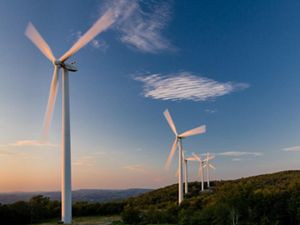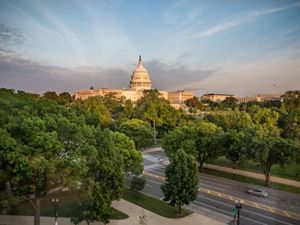Media Contacts
-
Cody Sullivan
Associate Director of Communications, North American Climate Policy
The Nature Conservancy
Email: cody.sullivan@tnc.org
The Nature Conservancy welcomes the new Clean Car rule issued by the U.S. Environmental Protection Agency (EPA) that strengthens emissions standards for cars and light trucks. The rule requires car makers to increase sales of electric vehicles and reduce emissions from gas-powered cars.
Quote: Jason Albritton
By setting forward a reasonable path and timeline for the auto industry to transition to electric and low-emission vehicles, the EPA’s new rule shows that the U.S. is serious about living up to its climate goals.
“The final Clean Car rule plots a clear path toward cleaner transportation in the U.S.,” said Jason Albritton, North America climate mitigation program director for The Nature Conservancy. “We know we need to reach net-zero emissions by 2050, and we can’t do that without significantly reducing emissions from cars and trucks. Currently the U.S. transportation sector is responsible for over one-quarter of U.S. greenhouse gas emissions. By setting forward a reasonable path and timeline for the auto industry to transition to electric and low-emission vehicles, the EPA’s new rule shows that the U.S. is serious about living up to its climate goals.”
“Though much like climate change at large, this new rule isn’t just about emissions. It’s also about people. Cars and trucks are major emitters of pollutants that harm human health and worsen air quality in communities, and disproportionately in vulnerable communities, across the U.S. By setting the transportation sector on a path toward lower emissions, this new rule will give everyone living in the U.S. the chance to breath cleaner air—something all of us deserve.”
The Nature Conservancy is a global conservation organization dedicated to conserving the lands and waters on which all life depends. Guided by science, we create innovative, on-the-ground solutions to our world’s toughest challenges so that nature and people can thrive together. We are tackling climate change, conserving lands, waters and oceans at an unprecedented scale, providing food and water sustainably and helping make cities more sustainable. The Nature Conservancy is working to make a lasting difference around the world in 81 countries and territories (40 by direct conservation impact and 41 through partners) through a collaborative approach that engages local communities, governments, the private sector, and other partners. To learn more, visit nature.org or follow @nature_press on X.


